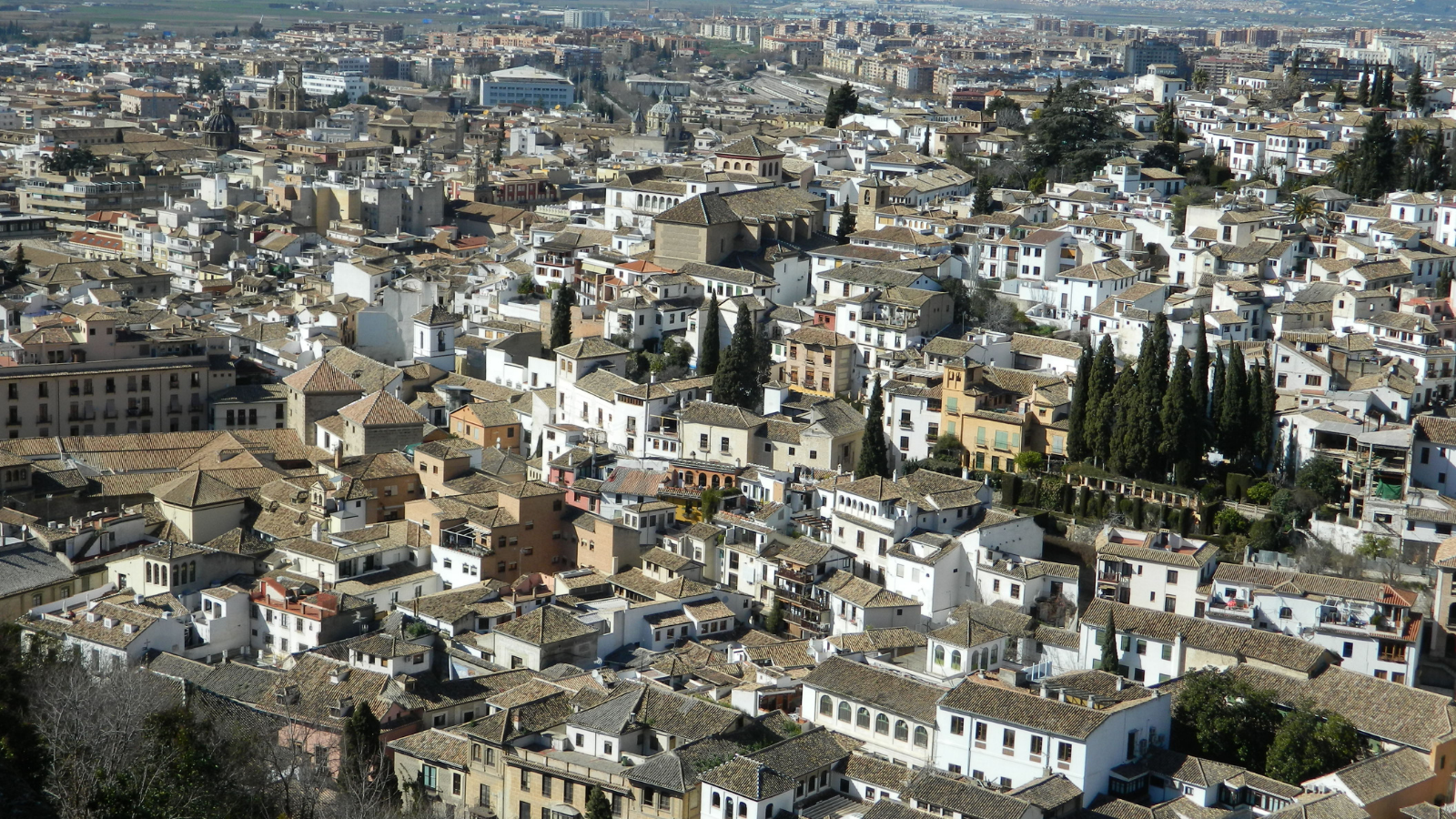
Top 10 Tourist Attractions in Spain for Indian Travelers
Spain, with its sun-kissed beaches, historic cities, and rich cultural tapestry, is a dream destination for many Indian travelers. From iconic architectural marvels to world-famous beaches, Spain offers something for everyone. This guide highlights the top 10 must-visit attractions in Spain that every Indian traveler should consider.
Sagrada Familia, Barcelona:
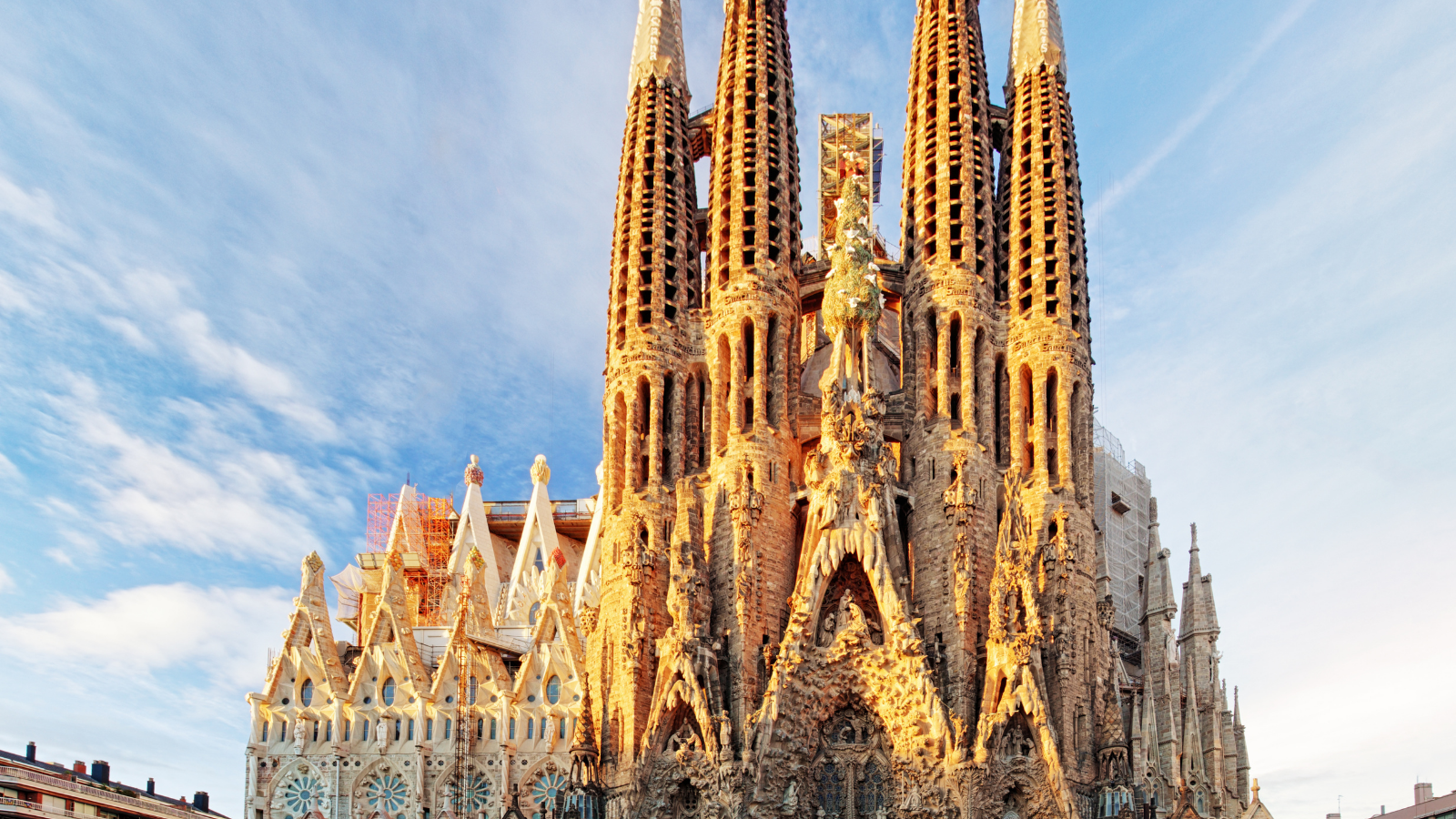
One of the most iconic landmarks in Spain, the Sagrada Familia is a basilica designed by the legendary architect Antoni Gaudí. Known for its awe-inspiring architecture and intricate details, the basilica is a blend of Gothic and Art Nouveau styles. Indian travelers will appreciate the spiritual ambiance, detailed carvings, and the ongoing story of its construction.
- Location: Barcelona
- Tip: Book tickets in advance to avoid long lines, especially during peak tourist season.
Alhambra Palace, Granada:
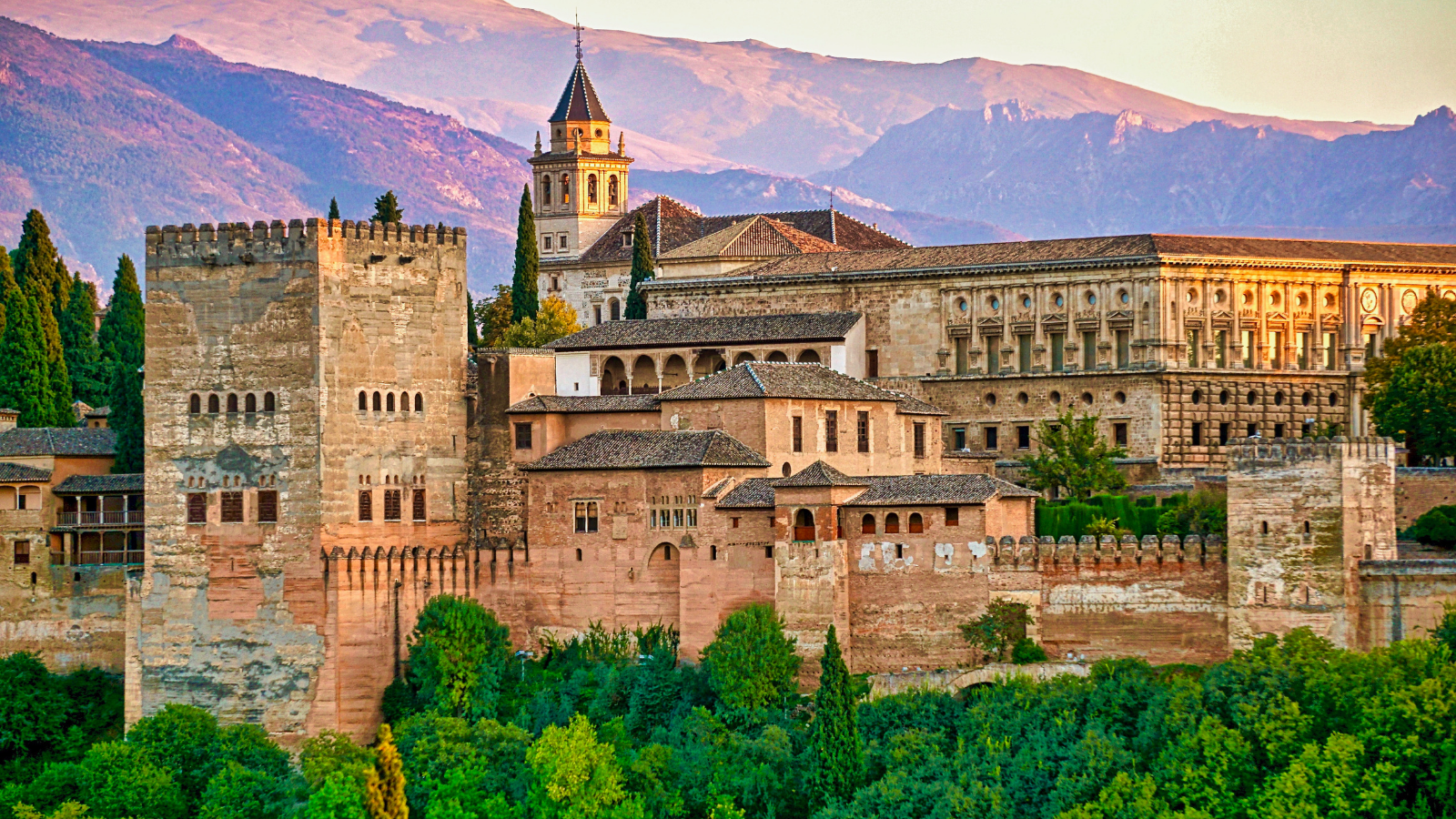
The Alhambra Palace is a UNESCO World Heritage site and an epitome of Moorish architecture. This palace, with its stunning courtyards, intricate tile work, and lush gardens, provides a glimpse into Spain’s Islamic history. Indian tourists often find the art and architecture familiar, with similarities to Mughal architecture.
- Location: Granada
- Tip: Join a guided tour to fully appreciate the historical and architectural significance of the Alhambra.
Park Güell, Barcelona:
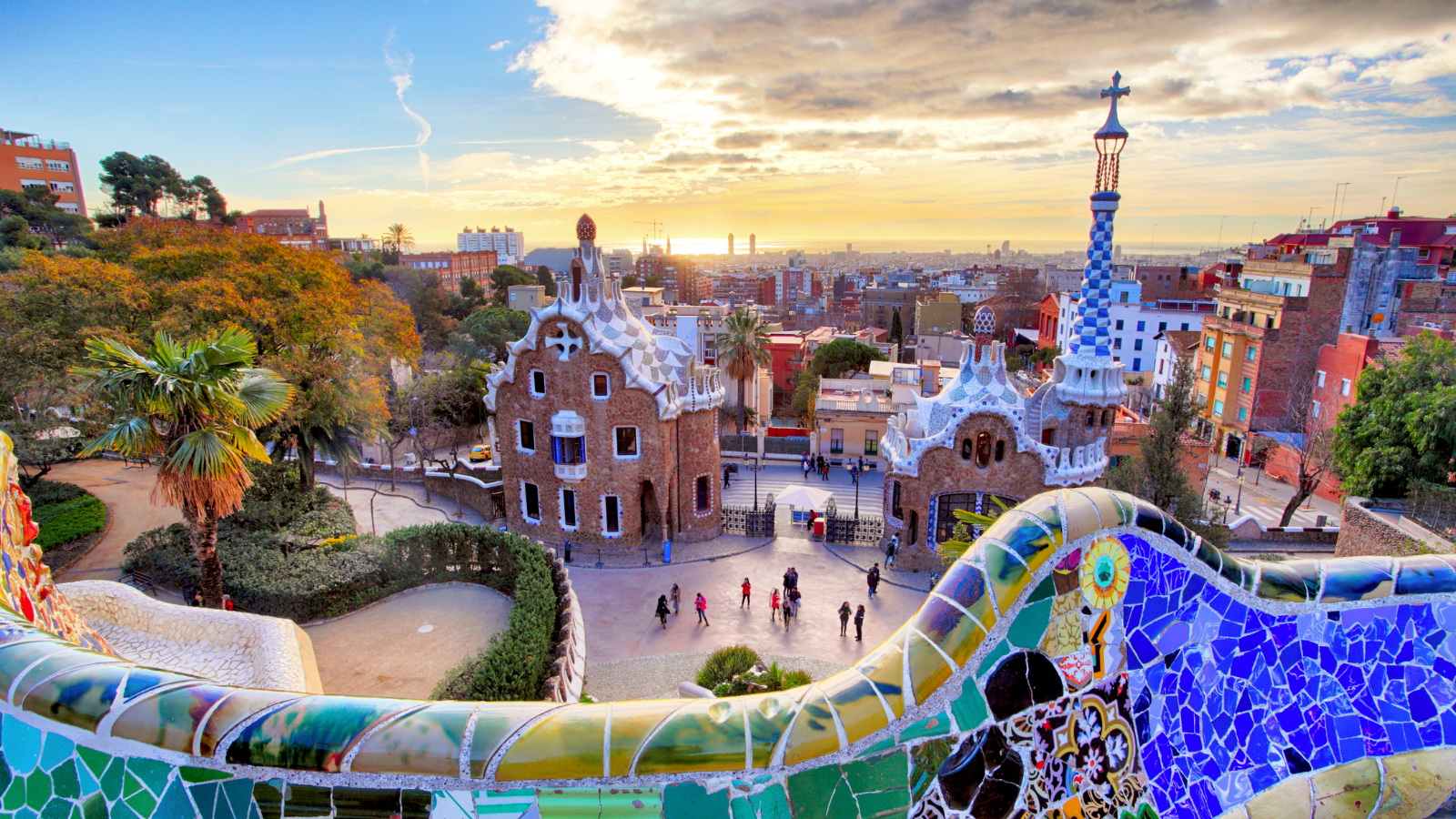
Another masterpiece by Gaudí, Park Güell is a colorful and whimsical park offering panoramic views of Barcelona. The park’s vibrant mosaics, sculptures, and organic forms make it a photographer’s paradise. It’s also a relaxing spot for families and solo travelers alike.
- Location: Barcelona
- Tip: Go early in the morning to enjoy the park with fewer crowds.
La Rambla, Barcelona:
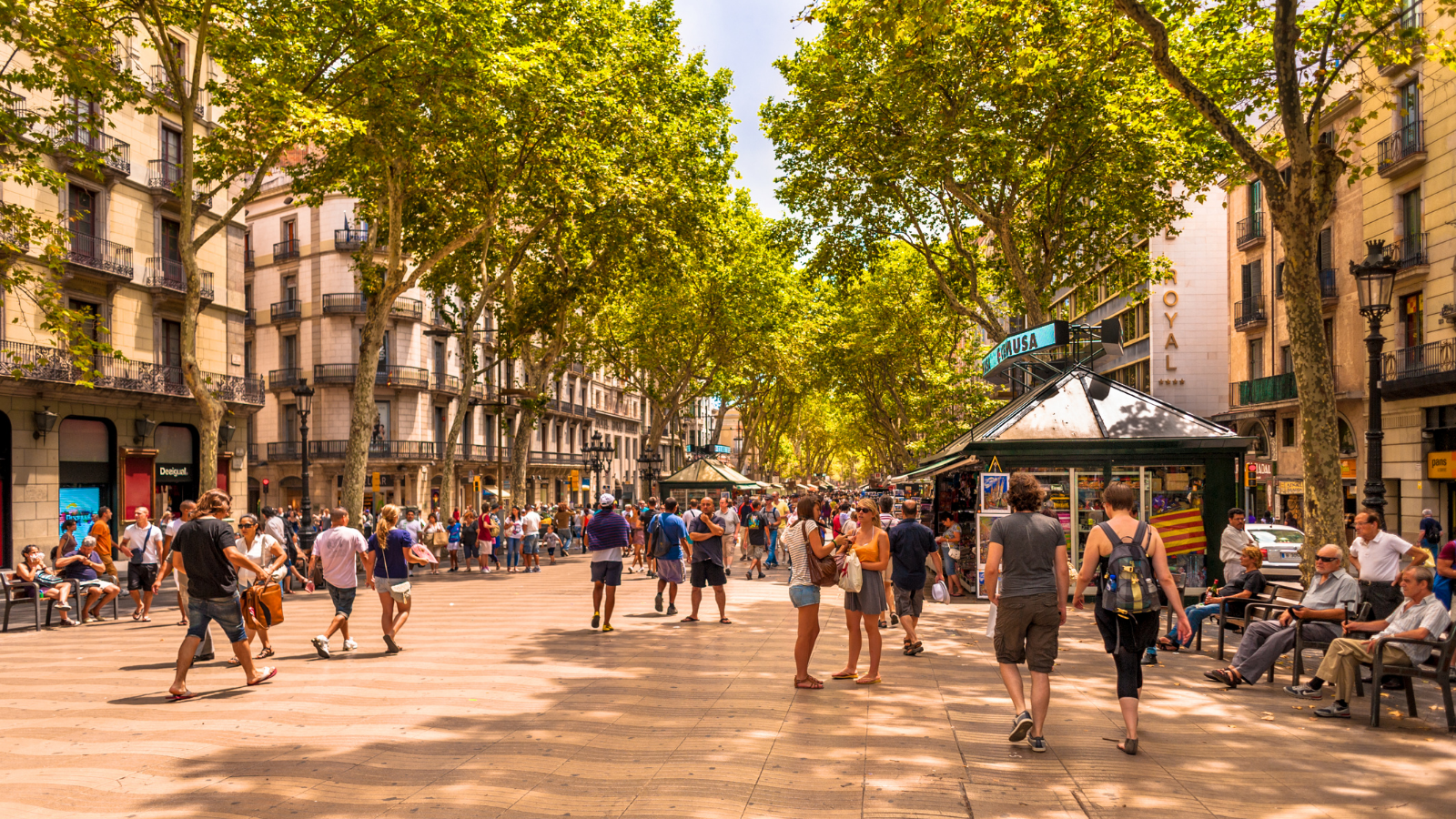
La Rambla is a lively street in the heart of Barcelona, known for its street performers, shops, and cafes. It’s a wonderful place to immerse oneself in local culture, taste some tapas, and do a bit of shopping. Indian travelers often enjoy the vibrant street life and local delicacies.
- Location: Barcelona
- Tip: Be cautious of pickpockets in crowded areas.
Prado Museum, Madrid:
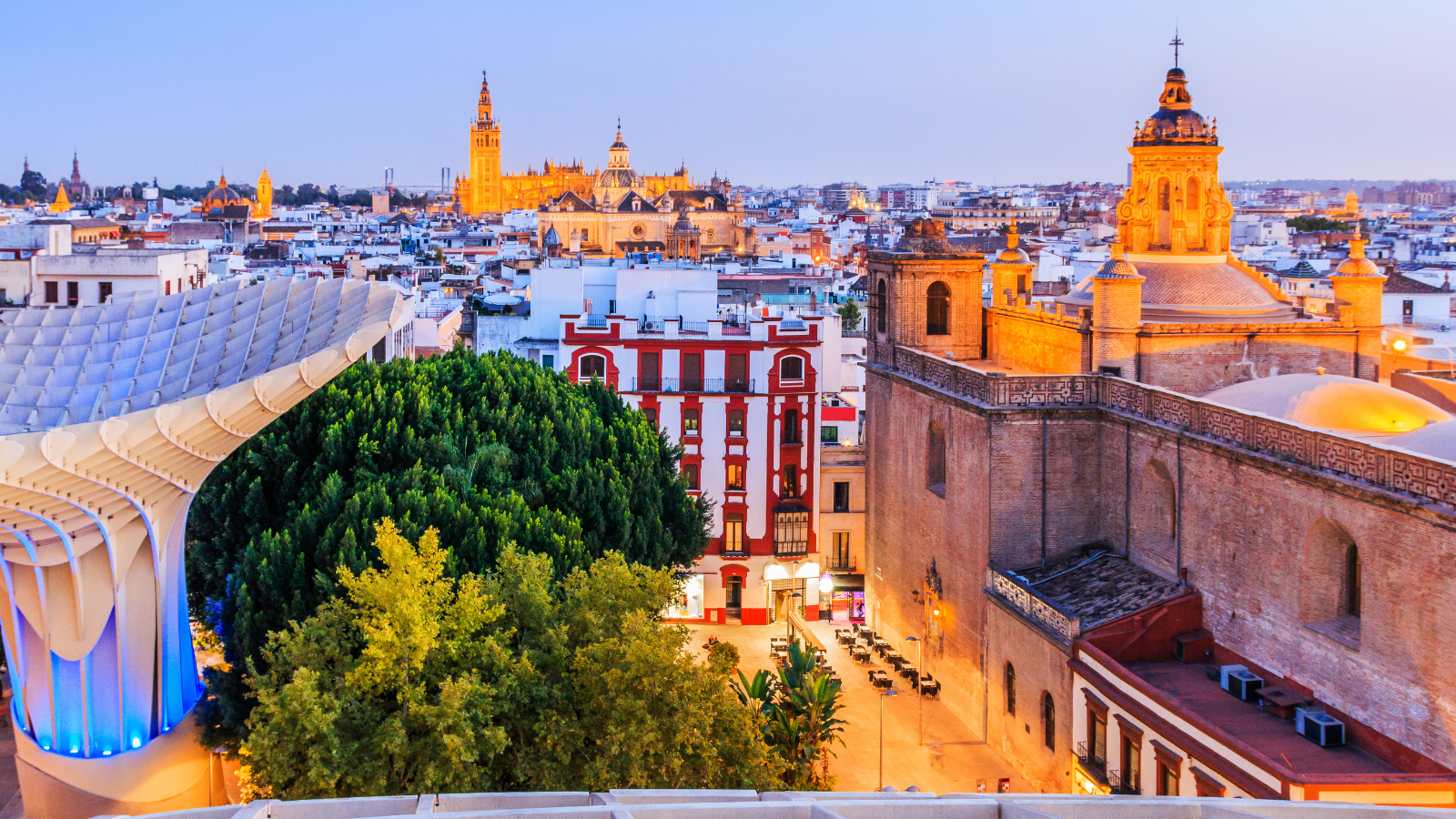
Art lovers should not miss the Prado Museum, one of the finest art museums in the world. It houses a vast collection of Spanish masterpieces by artists like Velázquez, Goya, and El Greco. The museum offers a cultural journey through Spanish history and art.
- Location: Madrid
- Tip: Take a guided tour for a deeper understanding of the exhibits.
Royal Palace, Madrid:
The Royal Palace of Madrid is the official residence of the Spanish Royal Family, although it is now used primarily for state ceremonies. This opulent palace boasts grand rooms, stunning tapestries, and impressive art collections.
- Location: Madrid
- Tip: Plan your visit on a weekday to avoid the weekend crowds.
Plaza de España, Seville:
This grand square in Seville is known for its stunning architecture and intricate tile work. The semi-circular plaza features bridges, fountains, and ceramic benches that showcase the diverse regions of Spain. Indian travelers often enjoy the photogenic setting and the chance to relax by the canal.
- Location: Seville
- Tip: Visit in the evening for beautiful sunset photos and enjoy a horse-drawn carriage ride around the square.
Seville Cathedral and the Giralda Tower:
As one of the largest Gothic cathedrals in the world, Seville Cathedral is a magnificent structure that houses the tomb of Christopher Columbus. The adjacent Giralda Tower, a former minaret, offers breathtaking views of the city.
- Location: Seville
- Tip: Climb the Giralda Tower for an unforgettable view of Seville.
La Concha Beach, San Sebastián:
Known as one of Europe’s best urban beaches, La Concha Beach in San Sebastián offers soft sands and calm waters, perfect for a relaxing day by the sea. Indian travelers looking for a break from sightseeing can unwind here, enjoying the coastal beauty and vibrant boardwalk.
- Location: San Sebastián
- Tip: Visit in the summer for the best beach experience, or take a boat trip to nearby islands.
City of Arts and Sciences, Valencia:
This modern architectural complex is a must-see for its futuristic design and unique attractions, including an aquarium, a science museum, and a planetarium. It’s an ideal spot for families and anyone interested in modern architecture.
- Location: Valencia
- Tip: Allocate an entire day to explore the various attractions within this complex.
Best Time to Visit Spain:
Spain has a diverse climate, and the best time to visit depends on the region. Generally, spring (April to June) and autumn (September to November) offer pleasant weather, fewer crowds, and lower prices. Summer (July and August) can be hot, especially in southern Spain, but it’s also the season for festivals and beach outings.
Travel Tips for Indian Travelers:
- Visa: Spain is part of the Schengen Area, so you’ll need a Schengen visa.
- Currency: Euro (EUR). It’s best to exchange some currency before arrival.
- Cuisine: Try Spanish dishes like paella, churros, and tapas. Vegetarian and Indian restaurants are available in major cities.
- Language: Spanish is the primary language. English is spoken in tourist areas, but learning a few Spanish phrases is helpful.
FAQs:
1. What is the best time to visit Spain for Indian tourists?
The best time to visit Spain is during spring (April to June) and autumn (September to November) when the weather is mild and tourist spots are less crowded. However, summer (July and August) is ideal if you plan to enjoy Spain’s beaches and festivals, although temperatures can be high, especially in the south.
2. Do Indian travelers need a visa to visit Spain?
Yes, Indian citizens need a Schengen visa to travel to Spain. This visa allows access to multiple European countries within the Schengen Zone. You can apply for a Schengen visa at the nearest Spanish consulate or through authorized visa processing centers.
3. Is Spain a budget-friendly destination for Indian tourists?
Spain can be affordable, but it depends on your travel style. Major cities like Madrid and Barcelona can be more expensive, while smaller towns and off-peak travel periods may offer budget-friendly options. Budget-conscious travelers can find economical accommodation, use public transport, and enjoy local food options.
4. What are some Indian-friendly food options in Spain?
Spain has a growing number of Indian restaurants, especially in big cities like Madrid and Barcelona. Spanish cuisine also includes several vegetarian options like gazpacho, tortilla española, and patatas bravas. However, if you prefer Indian food, you’ll find many restaurants catering to Indian cuisine in tourist-friendly areas.
5. Is it safe for Indian travelers to visit Spain?
Yes, Spain is generally safe for tourists. However, like in any major tourist destination, it's essential to be cautious about pickpockets, especially in crowded areas like La Rambla in Barcelona. Make sure to keep your belongings secure and avoid displaying valuables openly.
6. What currency is used in Spain, and should I carry cash?
Spain uses the Euro (EUR) as its currency. Credit and debit cards are widely accepted, but it’s advisable to carry some cash, especially when visiting smaller towns, markets, or local eateries. Currency exchange services are available at airports, banks, and major tourist areas.
7. What language is spoken in Spain, and will I face a language barrier?
Spanish is the official language, but English is commonly spoken in popular tourist areas, hotels, and restaurants. Learning a few basic Spanish phrases can be helpful, especially in smaller towns where English might be less prevalent.
8. Can I use my Indian SIM card in Spain, or should I get a local SIM?
You can use your Indian SIM card in Spain, but roaming charges may apply. It’s generally more economical to buy a local SIM card or an international travel SIM. Alternatively, you can rely on Wi-Fi, which is widely available in hotels, cafes, and public areas.
9. What should I pack for my trip to Spain?
Pack according to the season. In summer, light clothing, sunblock, and comfortable walking shoes are essential, especially if you plan to explore Spain’s beaches. In spring and autumn, carry a light jacket as temperatures can vary. A universal power adapter is also recommended.
10. Are there any cultural customs or etiquette I should be aware of in Spain?
Spanish people are generally friendly and welcoming. However, it’s considered polite to greet locals with “Hola” (Hello) or “Buenas días” (Good morning). Spanish mealtimes are typically later than in India; lunch is around 2-3 PM, and dinner starts at 8-9 PM or later. In churches and religious sites, dress modestly and respect silence.
11. How easy is it to travel around Spain for sightseeing?
Spain has a well-developed public transportation system, including high-speed trains (AVE), buses, and metro networks in major cities. Renting a car is also an option for more flexible travel, especially if you plan to visit smaller towns and countryside areas.
12. Are there guided tours available in Spain for Indian travelers?
Yes, there are many guided tours available across Spain that cater to international tourists, including Indian travelers. Some tour providers also offer tours in English and other languages. You can book city tours, historical tours, food tours, and more, either in advance or through local agencies.
Conclusion:
Spain is a diverse and culturally rich destination that offers Indian travelers a blend of historic sites, vibrant city life, and stunning natural beauty. Whether you’re interested in art, architecture, beaches, or gastronomy, Spain has something to enchant every traveler. This guide to the top 10 attractions in Spain is just a starting point to explore this beautiful country.






